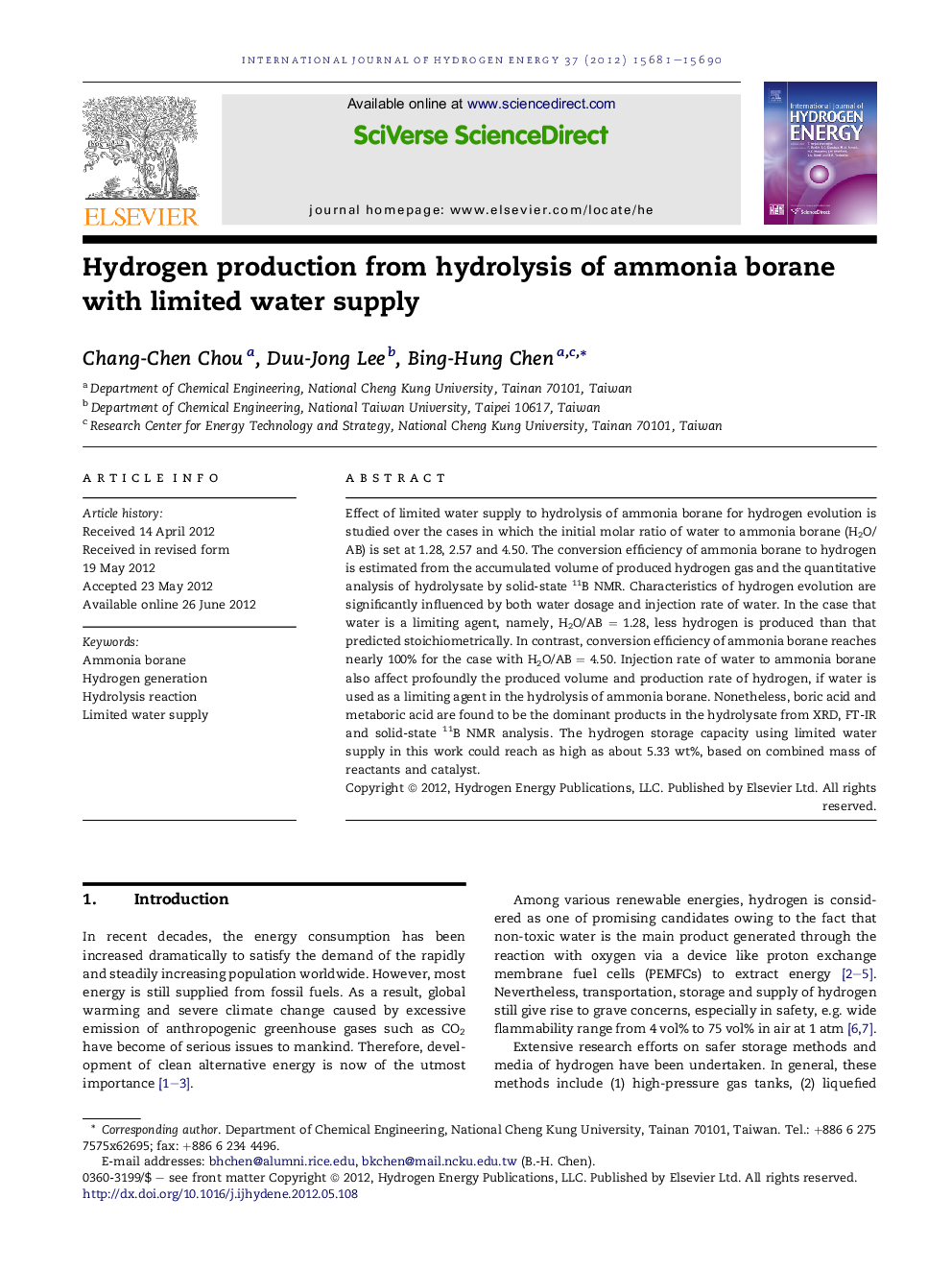| Article ID | Journal | Published Year | Pages | File Type |
|---|---|---|---|---|
| 1274581 | International Journal of Hydrogen Energy | 2012 | 10 Pages |
Effect of limited water supply to hydrolysis of ammonia borane for hydrogen evolution is studied over the cases in which the initial molar ratio of water to ammonia borane (H2O/AB) is set at 1.28, 2.57 and 4.50. The conversion efficiency of ammonia borane to hydrogen is estimated from the accumulated volume of produced hydrogen gas and the quantitative analysis of hydrolysate by solid-state 11B NMR. Characteristics of hydrogen evolution are significantly influenced by both water dosage and injection rate of water. In the case that water is a limiting agent, namely, H2O/AB = 1.28, less hydrogen is produced than that predicted stoichiometrically. In contrast, conversion efficiency of ammonia borane reaches nearly 100% for the case with H2O/AB = 4.50. Injection rate of water to ammonia borane also affect profoundly the produced volume and production rate of hydrogen, if water is used as a limiting agent in the hydrolysis of ammonia borane. Nonetheless, boric acid and metaboric acid are found to be the dominant products in the hydrolysate from XRD, FT-IR and solid-state 11B NMR analysis. The hydrogen storage capacity using limited water supply in this work could reach as high as about 5.33 wt%, based on combined mass of reactants and catalyst.
► Hydrogen is produced from hydrolysis of ammonia borane in solid state. ► Less H2 is produced than stoichiometrically predicted, if limited water is used. ► Introduction rate of water to ammonia borane affects the produced volume of H2. ► Boric acid and metaboric acid are the major hydrolysates of ammonia borane. ► H2 storage capacity of NH3BH3 fuel using limited water supply is ca. 5.3 wt%.
